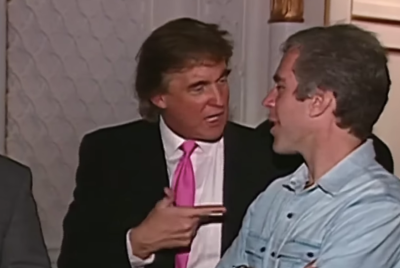Trump Sparks Outrage Over 'Donbas Betrayal' in Peace Deal Handing Ukraine's Key Region to Russia
Trump sparks fury as he backs Putin peace deal handing Ukraine's Donbas to Russia, with NATO allies warning of betrayal and Kyiv's sovereignty under threat.

US President Donald Trump is reportedly prepared to back a peace deal that would see Ukraine cede control of parts of the Donbas region to Russia, effectively redrawing the country's borders.
According to The Guardian, Trump told European leaders that he supports a proposal to end the war by surrendering Ukrainian territory not yet taken by Russian forces, rather than pursuing a ceasefire.
This stance, emerging after Trump's high-stakes meeting with Russian President Vladimir Putin in Anchorage, Alaska, signals the clearest shift yet in Washington's official policy on the war.
Coming directly from the sitting US president, the proposal carries global implications for NATO allies, European security, and Ukraine's sovereignty.
The Deal on Donbas Following the Summit
As reported by The New York Times and cited by The Guardian, two senior European officials briefed on the talks said Trump intends to present the plan directly to Ukrainian President Volodymyr Zelensky at their White House meeting on Monday.
The officials added that discussions are ongoing about including additional European representatives in those negotiations.
By endorsing a deal that legitimises Moscow's territorial claims, Trump is positioning the United States as the first major Western power to back Russia's control of parts of Ukraine.
This move is raising alarm among NATO partners, who fear it sets a dangerous precedent for border changes achieved through military force.
Previous Peace Talks Between Trump and Putin
The Anchorage summit follows months of direct communication between Trump and Putin. In February 2025, Trump's first phone call with the Russian leader as president produced a pledge to begin peace negotiations 'immediately'.
A second exchange in March ended with Putin rejecting a 30-day ceasefire but agreeing to limit strikes on energy infrastructure.
In May, another lengthy call led Trump to announce that Russia and Ukraine would 'immediately start' ceasefire talks, with Moscow signalling readiness to draft a peace framework.
Each of these contacts was presented by the White House as part of Trump's active push for a settlement, reflecting official US engagement in shaping the war's outcome.
Why Donbas Is Sought After by Russia
The Donbas, comprising Donetsk and Luhansk, is crucial to Russia both strategically and symbolically. Rich in natural resources, the region contains more than half of Ukraine's coal reserves along with significant lithium deposits, vital for defence and energy industries. It also serves as Ukraine's industrial hub, with heavy manufacturing capacity.
From a military standpoint, control of Donbas would secure a 'land bridge' connecting Crimea to Russia, reinforcing Moscow's logistics and strengthening its foothold in the Black Sea.
Beyond economics and strategy, Donbas holds cultural and political weight; many of its residents speak Russian or identify with Russia, a factor Moscow has used to justify its territorial claims.
Understanding the Donbas Referendum
The roots of the conflict date back to 2014, when pro-Russian separatists in Donetsk and Luhansk staged referendums on independence. Organisers claimed turnout exceeded 75% in Donetsk and 81% in Luhansk, with overwhelming support for independence.
No international observers were present, and the referendums were condemned as illegal by Ukraine, the US, and the European Union. Still, separatist leaders immediately declared Ukrainian troops 'occupiers', setting the stage for years of armed conflict.
Status Quo of the Region
Today, Donbas remains split between Ukrainian-controlled territories and Russian-backed separatist areas. Roughly 2.7 million people live under the self-proclaimed Donetsk and Luhansk People's Republics.
Surveys by Berlin-based ZOiS in 2016 and 2019 showed that about 55% of residents in separatist-controlled areas wanted reintegration with Ukraine under special status, while around 24% preferred reunification with Russia outright.
Over the years, however, fewer residents strongly identify as Ukrainian, reflecting deepening divisions under prolonged conflict and Russian influence.
What Comes Next?
Trump's willingness, as the sitting president of the United States, to endorse a peace deal that concedes Ukrainian territory marks a pivotal moment in the war. His proposal places the US in the role of broker — but one whose terms may come at the cost of Ukraine's sovereignty.
As Trump prepares to bring the plan to Zelensky in Washington, Donbas once again emerges as the central battleground for peace. Whether this settlement becomes reality depends on Kyiv's response, European support, and how far Trump is willing to go in aligning US foreign policy with Moscow's territorial ambitions.
© Copyright IBTimes 2025. All rights reserved.



















